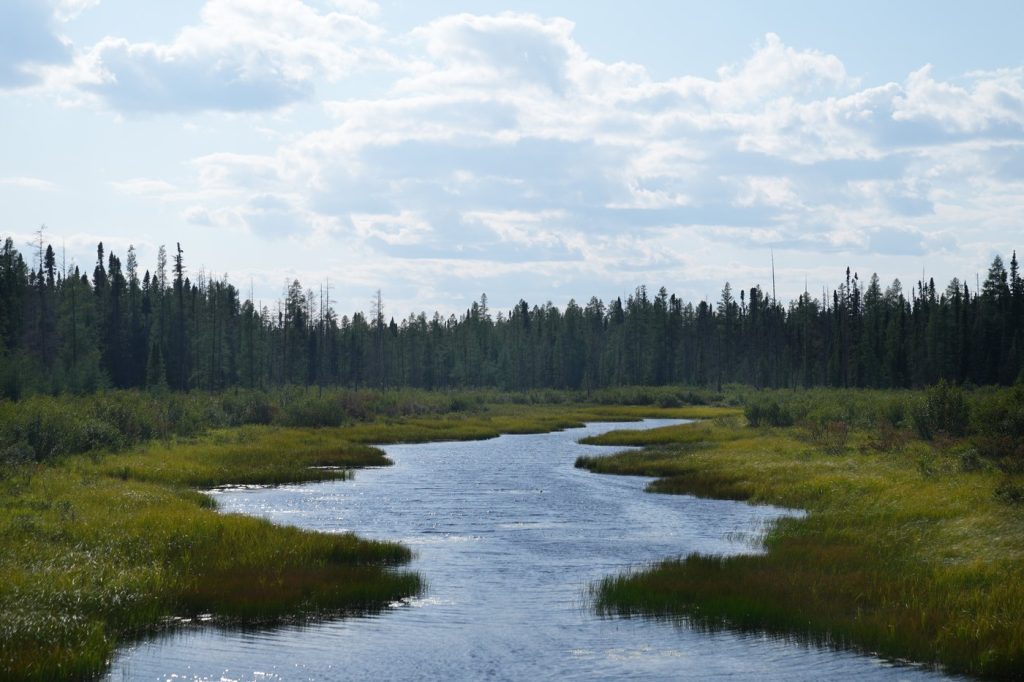Recent tensions arising from an ongoing trade war and U.S. President Donald Trump's interest in critical minerals have spotlighted Canada's rich mineral deposits. As a result, federal and provincial politicians are vowing to expedite natural resource projects. The surge in interest for Canada's critical minerals can be traced back to Trump's comments regarding the potential annexation of Canada, which experts believe have heightened amid the escalating global trade conflict.
According to Elizabeth Steyn, a mining and finance law expert at the University of Calgary, the situation has evolved into a significant domestic discourse about how Canada manages its natural resources and resource development. A core topic within this discussion is Ontario’s mineral-rich Ring of Fire, a vast region roughly 5,000 kilometers in size, believed to house substantial reserves of nickel, chromite, zinc, platinum, copper, and other vital minerals.
Conservative leader Pierre Poilievre has expressed his commitment to fast-tracking permits for mining in the Ring of Fire, aiming for approvals within six months. Furthermore, he plans to allocate $1 billion toward constructing a road network to facilitate this initiative. Meanwhile, Liberal leader Mark Carney has pledged to collaborate closely with the Ontario government to expedite the development of the Ring of Fire.
In alignment with these promises, Ontario’s government recently introduced legislation designed to accelerate the development of mines and other major projects by labeling some of them as “special economic zones.” The Ring of Fire is designated as one of these zones, with Premier Doug Ford stating that the urgency to fast-track mining projects is a direct response to Trump’s threats.
However, Ontario's efforts have sparked concerns from Indigenous groups, who argue that any development in the Ring of Fire should involve consultations with First Nations and respect their rights. The Chiefs of Ontario emphasized the need for genuine, nation-to-nation dialogue that acknowledges First Nations' jurisdiction, consent, and the pursuit of shared prosperity. New Democrat Sol Mamakwa, representing Kiiwetinoong where the Ring of Fire is located, expressed that the province continues to marginalize Indigenous communities, insisting that their lands should not be exploited without proper acknowledgment of treaties with the Crown.
Mamakwa warned that the province’s rapid approach to mining could face resistance, stating, “You cannot use a tariff war with the United States to override the rights of the First Nations people on these lands.” The urgency surrounding the development of natural resources is further fueled by Trump's rhetoric about potentially making Canada the 51st state, a notion he floated both before and after his January inauguration. Although initially dismissed as humor, this rhetoric has been taken seriously by Canadian leaders, with former Prime Minister Justin Trudeau highlighting its implications during a speech to business leaders.
Carney has echoed Trudeau’s concerns, articulating that there is a clear American desire for Canadian resources. Although Trump’s tone appeared to temper after a call with Canada's new prime minister, the discussion regarding Canada's status as a potential 51st state resurfaced this week. Steyn suggested that Trump’s comments are also driven by the need for the U.S. to secure its energy and digital sectors and strengthen national security by acquiring critical minerals.
Trump recently signed an executive order to investigate U.S. imports of critical minerals, a move that could lead to new tariffs and increased pressure on China, which has previously restricted its exports of rare earth minerals in retaliation for American tariffs. The U.S. is among the largest importers of essential minerals deemed crucial for economic growth and industries such as renewable energy and military technology. In contrast, Canada, endowed with a wealth of mineral resources, is still in the process of developing the Ring of Fire, which has few active mines and lengthy timelines for new projects.
Experts argue that Canada’s comprehensive supply of critical minerals is critical to meeting U.S. demands. Jack Lifton, co-chair of the Critical Mineral Institute, stated that Washington may not fully comprehend Canada's potential as a solution rather than a problem. With China currently being the dominant supplier of critical minerals, there is a growing European interest in finding alternative sources, positioning Canada as a viable option.
Ian London, executive director of the Canadian Critical Minerals and Materials Alliance, contends that Canada’s mining sector ought to pivot from merely exporting raw minerals to fostering an advanced domestic manufacturing industry. He argues for a re-industrialization that would retain more value within Canada instead of exporting resources for others to profit from. Amidst current tensions with the U.S., he sees this as an opportunity for Canada to develop its critical minerals industry, despite potential short-term challenges.
Tracy Hughes, executive director of the Critical Mineral Institute, remarked on the irony of the U.S. alienating a neighboring country that has abundant resources essential to its economic needs. She suggested that whoever becomes Canada’s next prime minister should pursue a mineral deal with the Trump administration, as crafting such an agreement could lead to a renegotiated trade framework between the two countries.










